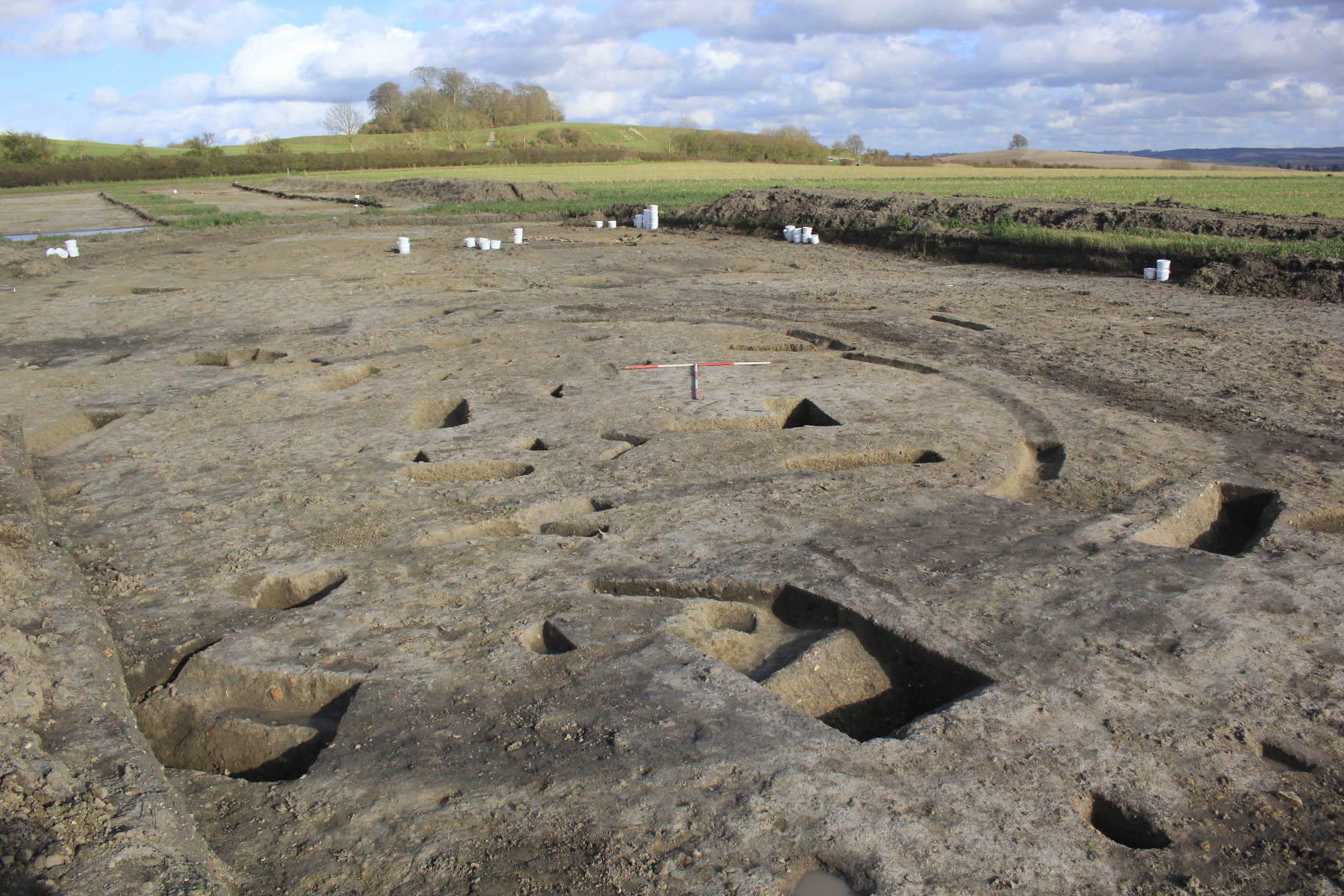Archaeologists have unearthed inOxfordshire, England, a blacksmith ’s workshop radiocarbon-dated to 771-515 B.C., nearly 2,700 years ago, the date at which metallurgy developed in Britain, assuming considerable importance and slowly becoming key to economic and military development. The discoveries were unearthed by archaeologists from DigVentures, a platform that enables civic participation in archaeology projects, during excavations at the headquarters of the environmental charity Earth Trust near Abingdon. The excavations took place near Wittenham Clumps, a well-known landscape site in South Oxfordshire managed by the Earth Trust and known locally as The Clumps. The site includes Castle Hill, an ancient hill fort and scheduled ancient monument.
From analysis of the artifacts found, researchers have deduced that the site may have been used as a workshop by a master blacksmith specializing in the production of large iron artifacts, such as ingots, swords, and chariot or wagon wheels. The analyses also identified the footprint of the forge building and internal structures, pieces of hearth lining, metal waste and hammer flakes. Notable among these discoveries is the discovery of an intact pipework through which air was blown into a furnace or hearth, also acting as a buffer to protect the bellows from the extreme heat of the flames. The importance of such sites lies in the information they provide, giving us tangible evidence of how they were used, especially considering their ancient period of use, which is characterized by extremely limited documentation. The excavation includes an Iron Age settlement that included a group of roundhouses, an Iron Age pantry and evidence of ceremonial or ritual activities including animal burials, as well as a later Roman villa where archaeologists found the remains of a tiny Roman pet dog.
From Feb. 17-18, 2024, the Festival of Discovery will take place at the Earth Trust Center organization’s headquarters in Abingdon, featuring a free pop-up exhibition, lectures and workshops with archaeologists and showcasing the latest discoveries from ancient Oxfordshire.
“It is exceptionally rare to find a complete pipework, especially one this ancient. Although there are examples from later periods, including Saxon, Viking and medieval pieces, this is one of the few known Iron Age examples in the country, if not in Europe. The fact that it dates not only to the Iron Age, but to the first centuries of ironworking in Britain, is remarkable,” said Gerry McDonnell, an archaeometallurgical specialist who examined the finds. “Also, its size suggests that we are looking at a much larger and more specialized hearth than that of an ordinary village forge.”
“The only reason a smith would need a larger hearth would be if they were forging something as long as swords or ingots, or as big as wagon wheels. And these would not be done by the normal village blacksmith who would normally take care of everyday items and repairs,” McDonnell explains. “The fact that this early Iron Age smithy had a specialized tubing machine shows us that it was much more likely to be a serious operation by a highly skilled blacksmith,” he concluded.
“It’s always exciting to discover the remains of ancient buildings that were occupied thousands of years ago, but it’s even more special when we find direct evidence of who lived there and what they did inside,” says Nat Jackson, director of DigVentures, which led the excavation. “In this case, the range of evidence is remarkable. We have almost every component of the blacksmith’s workshop; the building, the interior structures, the hearth lining, the tubing, even the bits of metal that fly off when the blacksmith hammers the metal. The only thing we didn’t find were the tools,” he said. “It’s an incredible thrill to discover something like that. Basically it allows us to look back in time and see what could have been one of the first British master blacksmiths at work.”
“At Earth Trust, our vision is a world where people and nature thrive together. The more we learn about the historic people of Wittenham Clumps, the more we understand that balance,” said Anna Wilson, Earth Trust experience and engagement manager. “Nearly 15,000 artifacts were recovered during the excavation, and as we continue to analyze them, the story becomes more and more compelling. These new discoveries are literally forging a new story before our eyes and revealing more ancient mysteries behind this very special place.”
“We are excited to announce that key finds from the excavation will be displayed in a free pop-up exhibit at our visitor center and that we will bring them to life with lectures and hands-on activities during our upcoming Festival of Discovery in February,” Wilson adds.
Here is a link to practical information and tickets for the festival: https://digventures.com/product/archaeology-festival-of-discovery-at-earth-trust/
 |
| Blacksmith's workshop dating back nearly 2,700 years discovered in Oxfordshire |
Warning: the translation into English of the original Italian article was created using automatic tools. We undertake to review all articles, but we do not guarantee the total absence of inaccuracies in the translation due to the program. You can find the original by clicking on the ITA button. If you find any mistake,please contact us.